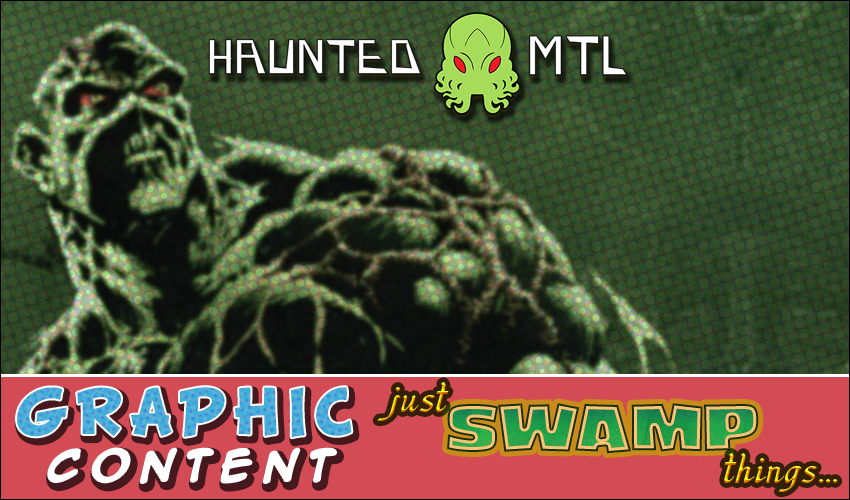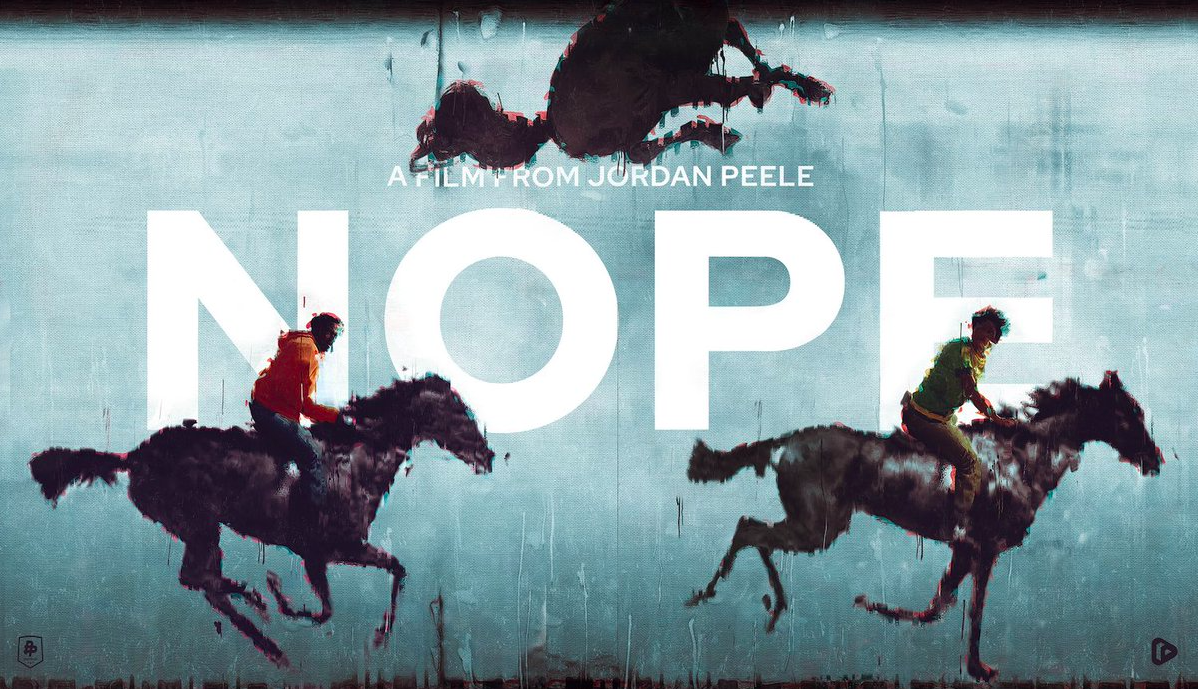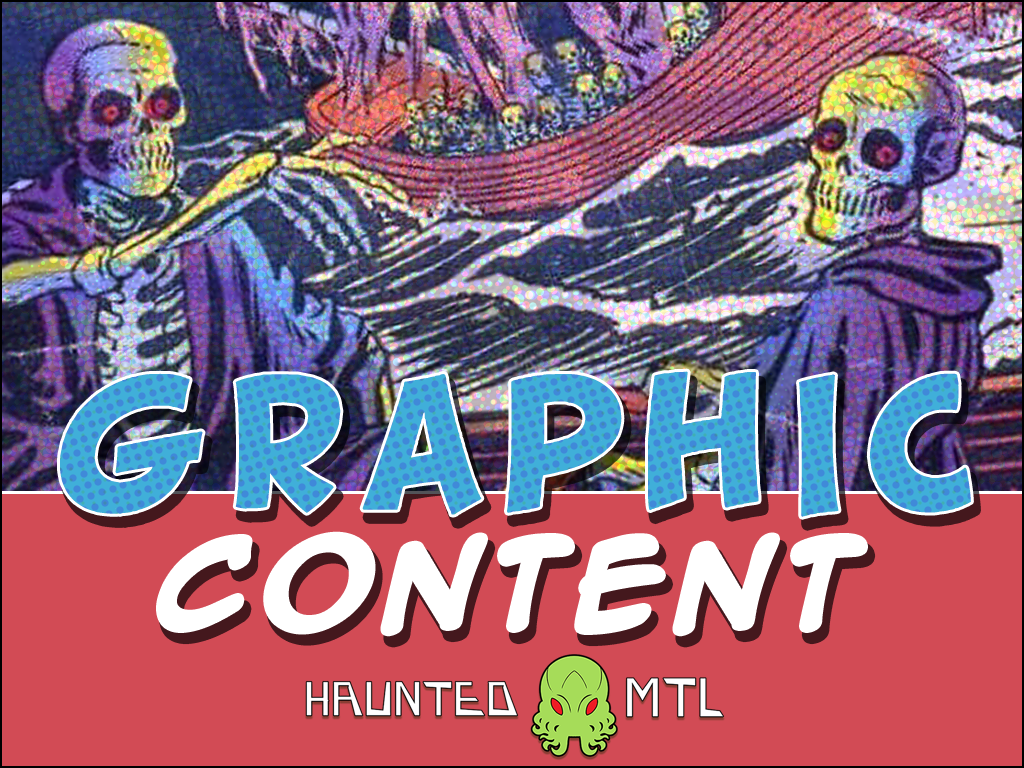
Graphic Content #2
More Videos
Published
5 years agoon
Welcome back to another installment of Graphic Content where I dive into some horror comics. This week we continue our ongoing reviews of Hellblazer and Killadelphia, but we also introduce a third comic into the mix. Might it become an ongoing read for Graphic Content? We’ll see…
John Constantine: Hellblazer #4

It’s a new age of magic in the fourth issue of John Constantine: Hellblazer, “Scrubbing Up, Part One.” John is finally trying to give this new world a go after his experiences opening up the series in the first arc, but he immediately gets razzed for his new look and encounters a new time of magician in Tommy Willowtree. This issue has the new standard of John at work, Noah driving him around, and introduces the wrinkle of Yoga magic through Tommy. Tommy plays on the kind of Millenial magic that you find on Instagram and Pinterest and while John takes the piss out of it Tommy’s brand of the “mystic arts” (his words, not mine) are pretty effective. Especially fun is John’s complete disdain for “Pun Magic” and pretty much being bested by this new guy at every turn.
The art has changed with this new storyline. As much as Aaron Campbell’s art evoked classic Hellblazer in the first arc, this new arc is doing something new. Artist Matías Bergara presents a brighter, more exaggerated style that may initially seem off for Hellblazer. However, it totally suits the current story and still has that underlying edge of grunge, such as the details around John’s eyes or the magical attack on foreign folk made by the ravens of the Tower of London.
Overall, this has been a welcome start to a new arc and maybe even a new era of Hellblazer. The previous arc, “A Green and Pleasant Land” felt very much like an evocation of a previous era to bring in the Hellblazer diehards. Hopefully, they stick around for this new shift in the series. I do worry Tommy Willowtree is being written a bit too broadly and is going to end up both a punching bag and a victim as a “take that” but time will tell.
 (4 / 5)
(4 / 5)
John Constantine: Hellblazer #4 was written by Simon Spurrier, illustrated by Matías Bergara, and colored by Jordie Bellaire.
Killadelphia #5

We return to the exciting world of Killadelphia with “Sins of the Father, Part V: The Sun Will Rise.” I have been pretty effusive with my praise for the series since it launched and it still deserves every bit of praise. As excited as I am about the potential of it becoming a TV show I am also a bit bitter that such a unique comic, something that really represents the height of the art form, is going to probably become more known as a show. I would have preferred the series to remain a gem in comics for a while, but I do not begrudge the creative team their success. But hey, these are my hang-ups as someone who came into the series and appreciated it immediately; I just want to be that guy, again, the sort of “I knew about it first” hipster. Like it was with The Walking Dead all those years ago.
Sigh.
Anyway, Killadelphia is still good, damn good. This issue follows the aftermath of the prior’s mass vampire attack on Philadelphia. It is very much a “rallying the forces” moment in the series. We catch up with the larger cast of the story, particularly making time for the vampires of all ranks within Adams’ organization. We also learn that there are more ancient connections to Africa in the strain of vampirism, as illustrated by vampire Tevin, who is quickly turning out to be one of the best and most sympathetic characters in the series. We also spend a good deal of time with the little girl vampire, Brittany who lived during the slavery-period of the United States around the time of the Civil War.
Perhaps the biggest wrinkle to all of this is the introduction of a figure known as Seesaw, who seems to have an ability that has already made the Killadelphia form of vampirism even more interesting. I won’t be spoiling that here, but pay very close attention to Brittany’s storyline. This could be a game-changer in a series that already does some fantastic and interesting things with vampires. Hell, even Carl Kolchak makes an appearance.
Jason Shawn Alexander’s art still sings and the coloring choices by Luis Nct are absolutely on point. Brittany’s scene with a group of cops is particularly visceral and worth a few looks. Brittany’s bleeding eyes and heart-icon shirt create a very strong image when in silhouette.
The romance between two key characters still feels a bit forced to me, but the emphasis on it in this issue is limited to a few touches, glances, and a very brief acknowledgment. I am not anti-romance at all, but when the cast of the characters has such a small pool of women it feels a bit too much of a throwback to immediately pair her off with someone. Thankfully she still maintains her agency.
 (4.5 / 5)
(4.5 / 5)
Killadelphia #5 was written by Rodney Barnes, illustrated by Jason Shawn Alexander, and colored by Luis Nct.
Sink #1

This indie book was a suggestion by my friend Robert Livingston, creator of the webcomic Tom n’ Artie (be sure to check it out). Sink isn’t necessarily straight-up horror, being more of a crime book, but there is some rather horrific stuff going on within so it seems like a good fit for Graphic Content.
Set in Glasgow, Scotland, Sink is definitely a great example of that old adage, “well, that escalated quickly.” It’s a dirty, violent book. The kind of shit you would hide in your pile of comics away from the prying eyes of your parents. If vigilante violence with a fox-head mask and a shovel against a roaming gang of snuff filmmakers seems up your alley then Sink should be worth a read.
And that’s not even covering the psycho clowns in a blue van.
Not being a Glaswegian I am definitely missing out on a few references initially, but that’s what the internet is for. Much like how John Constantine, Hellblazer tackles modern London, Sink seems to be doing the same with Glasgow. As far as the narrative goes, I am still a bit on the fence. The first issue’s story is perfunctory at best but it establishes the waking nightmare of its own Glasgow, so it at least has me intrigued in that regard.
As far as the art goes, kudos to Cormack for illustrating some of the most violent material I’ve seen in a couple of years. The violence and gore rides that fine line of cartoonish exaggeration and grotesque realism and then dumps a bucket of blood over everything for good measure. Good thing the comic seems to be digitally colored because I would worry about the cost of red markers Alex Cormack faces week to week.
I am on the fence if I want to slot this title into my Graphic Content ongoing reviews, but at six issues I am likely to do so. We’ll just need to see how I feel about Sink #2. The first issue leans heavily on style over substance and the messaging about violent and marginalized neighborhoods could probably be handled a bit more elegantly, but overall I am intrigued enough to continue the ride.
 (3.5 / 5)
(3.5 / 5)
Sink #1 was written by John Lees and illustrated and colored by Alex Cormack.
If you want to suggest a title for me to cover, please drop me a line on Twitter or leave a comment on this post. Stay tuned for more Graphic Content next month.
Related posts:
David Davis is a writer, cartoonist, and educator in Southern California with an M.A. in literature and writing studies.

You may like
Horror in graphic novels
Read Hide if you need a dark graphic novel to talk about over Thanksgiving
Published
4 months agoon
November 24, 2024Thanksgiving is coming up this week if you live in America. And many of us are going to be in contact with younger relatives. And some of you might be on a mission to be the cool/bad influence relative that introduces them to the horror genre. If so, I have just the graphic novel for you.
Published in September of 2023, Hide is based on the novel of the same name by Kiersten White. It was adapted into a graphic novel by Scott Peterson, and illustrated by Veronica and Andy Fish. It tells the story of fourteen people who believe they are in a reality show, playing Hide and Seek in an abandoned theme park. It should surprise absolutely no one to find out that the creators of the show have something much darker in mind.
The story
Our main character is Mack. She’s had about the worst rough start to life one could imagine and is currently living in a homeless shelter. There, she’s given the opportunity to participate in a game show, playing hide-and-seek.
I like to think that if the shelter manager had known of Mack’s horrific past, she wouldn’t have ever made that suggestion.

Mack signs up and soon finds herself in an abandoned amusement park with thirteen strangers. The rules are simple. Hide during the day, and be the last person found. Of course, this is nothing but a lie. There will be no winners, only victims.
What works
The first thing we have to talk about is how Hide the graphic novel compares to Hide, the original book. Of course, there wasn’t going to be enough room for every single part of the story. There were some cuts. But it doesn’t feel like anything essential was cut here. The characters remain the same. The storyline is still there, sans any structural issues. Often, this is a difficult thing to do. Some stories don’t translate from one medium to another. But Peterson did a wonderful job.
Of course, we can’t talk about a graphic novel without talking about the art. And the art in this book is fantastic. The colors are rich and vibrant. Everything looks exactly like one might picture it when reading the novel.
Except for the monster, which I have to admit I pictured more like a Rat Creature from Bone.
My favorite part was the journal entries. I loved the cryptic sigils that are scribbled over the page without explanation. I loved the different handwriting. I loved the clippings of newspapers and pictures. The whole thing was just wonderfully, eerily, immersive.
Finally, I want to point out that Hide is a great graphic novel even if you’ve never read the book, and never intend to. This is not a companion for the book. It tells the story all on its own. And yes, reading a graphic novel is just as valid as reading any other novel. This is just a good story, with good artwork. No other reading is necessary.
What didn’t work
There was only one thing I didn’t love about Hide. And that was the ending.
It’s usually the ending.

In the novel, the ending is ambiguous but satisfying. This ending was, without ruining it, a little more ambiguous. There are questions I really wanted answers for that I didn’t get. There is at least one character that I’d like to know about. Are they okay? I don’t know. And this ending doesn’t even really give us a hint. All we can do is hope.
If you are going to be picking this up for a younger person, be aware that there is some rough language. There are also a few graphic scenes of violence, so if that’s the sort of thing that will get you banned from further holiday events, be aware. But if you have a tween or teen who needs to be encouraged to delve into the creepy side, Hide is a great way to do it. Of course, there’s no shame in just reading it yourself.
 (4.5 / 5)
(4.5 / 5)
Book Reviews
Vermis II: Mist & Mirrors, a Book Review
Vermis II: Mist & Mirrors is a graphic novel by Plastiboo, acting as the “official guide for a game that doesn’t exist.”
Published
6 months agoon
September 17, 2024Vermis II: Mist & Mirrors is a graphic novel by Plastiboo. The team behind the work includes Plastiboo as the artist, Hollow Press as the publisher, Michele Nitri as the editor, Christian Dolz Bayarri as the graphic designer, Marco Cirillo Pedri as the graphic supervisor, and E.R. as the English editor and proofreader. The Vermis collection seems sold out in its current editions, but I still recommend ordering from the original publisher, Hollow Press.
Who stares back from the dark glass? The Wayfarer travels–cursed and haunted by their past–through the distant lands and places within the Mist & Mirrors. Endure a corrupt world and struggle to fend off the curses that mark you. Venture forth, Wayfarer, and perhaps find peace and salvation.
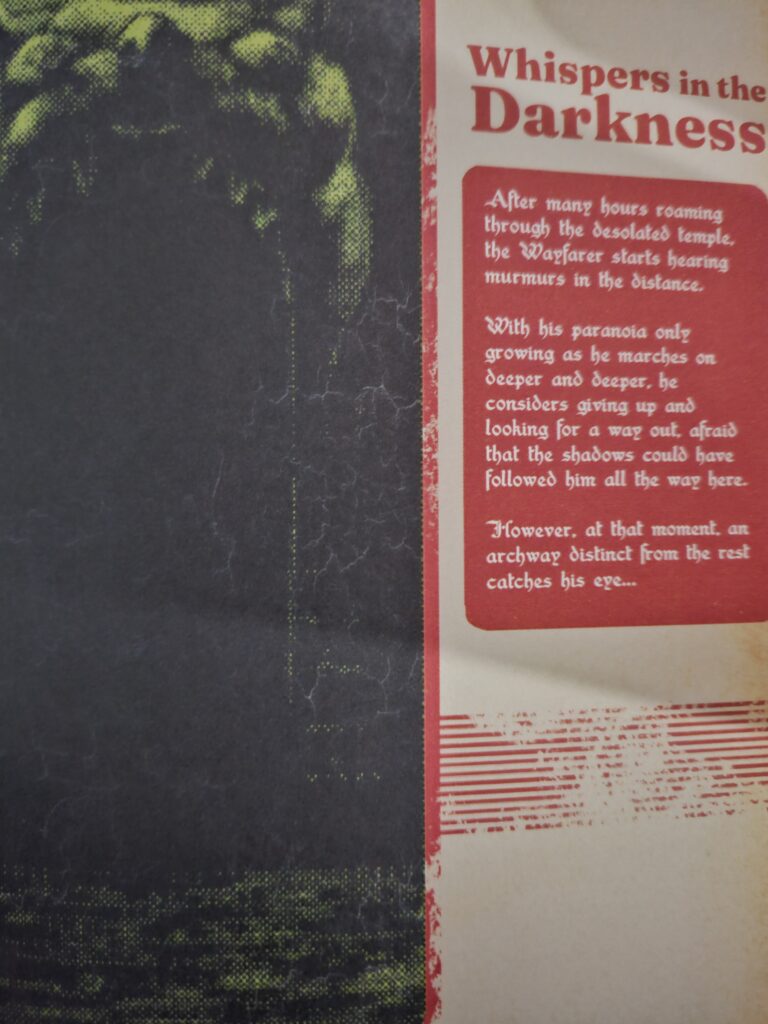
What I Like about Vermis II: Mist & Mirrors
The premise remains an “official guide” to a game that does not exist. However, one key distinction that stands out is the corrosion of this “official guide” mark, suggesting Mist & Mirrors centers itself as a graphic novel. In this sense, it more accurately hits its vision while providing an engaging story.
Mist & Mirrors places its character selection at the end of the graphic novel, instead, choosing a character and allowing the reader to follow that journey. While this moves away from the “official guide” concept, it better fleshes out the world and creates a more independent product.
Where Vermis I held a heavy retro-game aesthetic, Vermis II takes this to the next level while adding a wider range of color than the original. Not only does this add more aesthetic variety, but it also vastly improves readability. My greatest critique of the first graphic novel was the general lack of readability that impacted the experience, but Mist & Mirrors seems to take this to heart. Beyond the variety and improvement, the design changes the color themes to match the distinct lands the “Wayfarer” embarks on, giving a direct purpose to the changes.
On starting the graphic novel, I half expected a spiritual successor set in a new world. While its setting certainly differs from the original, Mist & Mirrors expands on the lore and history. In fact, the exploration of Mist & Mirrors adds value to the original and encourages a re-read. Honestly, that’s what all sequels strive (or should strive) to succeed.
Despite the colorful innovation, Vermis II: Mist & Mirrors delivers that same bleak horror popularized by Dark Souls. It still wears its inspirations on its sleeves while better communicating its “game mechanics.”

Tired Tropes and Triggers
Again, there aren’t many points worth mentioning regarding tropes or triggers. As the graphic novel takes themes and trends from the Soulslike genre, it’s dark and bleak but not overwhelmingly so.
Payment and delivery (for American audiences) still come with a 15 to 45-day wait period with little room for verification or updates. The process through PayPal remains seamless, and I received the novel within the timeframe, but it’s a consideration.
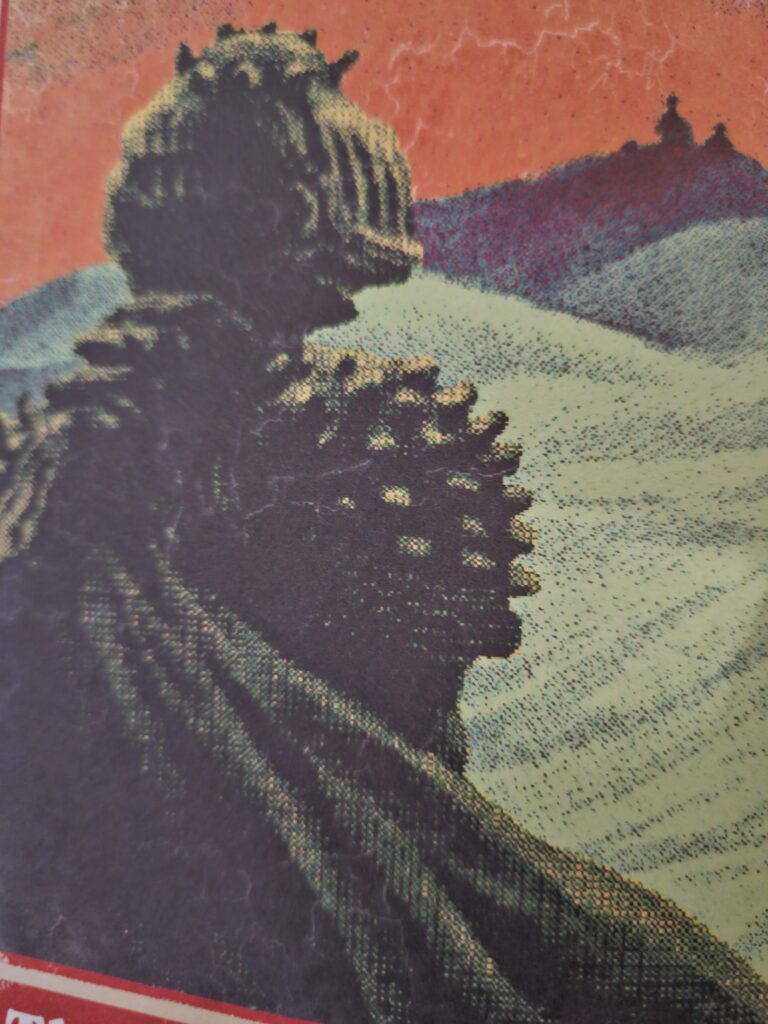
What I Dislike about Vermis II: Mist & Mirrors
While there are notable points to mention in this section, Mist & Mirror vastly mitigates Vermis I’s core issues. However, that isn’t inherently the same as fixing them in some cases. For example, readability remains a slight issue. I will emphasize it as a slight issue with the vast improvements implemented.
For those fans of the specific niche that Vermis aims to deliver, Mist & Mirrors tones down the “official guide” aspect. Instead, it favors a more straightforward narrative that follows a specific character. This brings life to the “game world” and makes an independent product but limits Vermis I’s game guide concept.
On a more personal note, I did enjoy the concept of Vermis I’s classes over the classes of Mist & Mirrors. Naturally, there are some interesting concepts, but nothing haunts me like the Infant Seeker or Rat Man. However, the new choices seem to provide a stronger narrative and backstory.

Final Thoughts
Vermis II: Mist & Mirrors vastly improves in many aspects of the original, telling a story set in its bleak and fascinating world. While it does veer from the original concept, it does so to make a more independent product. If you are looking to lose yourself in a strange world or dive deeper into Vermis’ underexplored lore, Mist & Mirrors seems tailor-made for you.
Published in April of this year, Bad Dreams in The Night is a collection of horror comics by the artist and author Adam Ellis. With the description stating that it is a graphic novel version of Scary Stories to Tell in the Dark, I had to get my hands on it. And it did not disappoint.
The stories
Bad Dreams in the Night consists of eleven short horror stories. I honestly don’t think there’s a bad one in the whole bunch. So let’s just highlight a few.
Easily my favorite story in the book was Little House in the Sea. It’s a sweet, eerie little tale that seems like a pinprick view into a dark and horrifying world. It left me with so many questions that I fear will never have answers. The story is about a young woman and her mother, who live on a little island all alone. The young woman is never to ask about what is on the other side of the sea. Then, her mother dies. And everything changes, but not by a lot.
Green Ribbon was another great story. It’s a retelling of the classic Girl With a Ribbon story from the original Scary Stories book, in which a man is confused and eventually angry that the love of his life wears a ribbon around her neck and won’t tell him why. I liked this updated version. It’s a stark reminder that just because we marry someone, we aren’t owed all of their secrets.
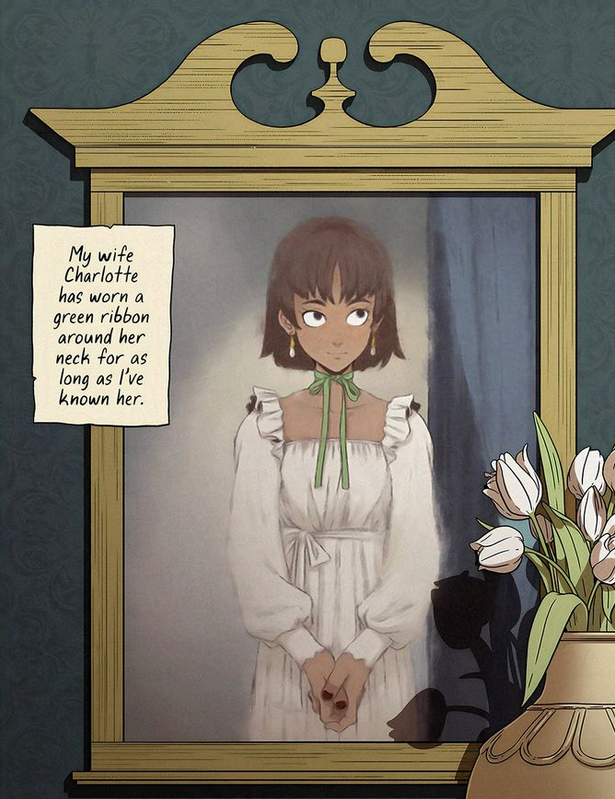
What worked
Of course, the first thing I have to point out about Bad Dreams in the Night is the fantastic artwork. Ellis was a cartoonist first, and it shows.
The artwork is part of the storytelling as well. The best example of this is the story Better Kate Than Never. The younger sister character, Taffy, has such an animated face during the scenes with a ‘studio audience’. When she is just herself, her face is flat, and far more mature than we’d expect for a girl her age.
Though, I suppose based on the story, she might be any age.
Another really enjoyable thing was the mini-essays at the end of each story. As a creator myself, I love the little peeks into the creative process. I know how I come up with stories. But it’s different for everyone, and the story behind the story is often just as fun.
Finally, I have to praise a feature that applies to Ellis’s work overall, not just this book. Whenever he writes scary stories (and he has posted quite a few on his social media) they are a fascinating blend of cute and horrifying. The artwork always has a lovely, innocent, cartoonish look. The children always look like cartoon children, with exaggerated large heads and wide circular eyes.
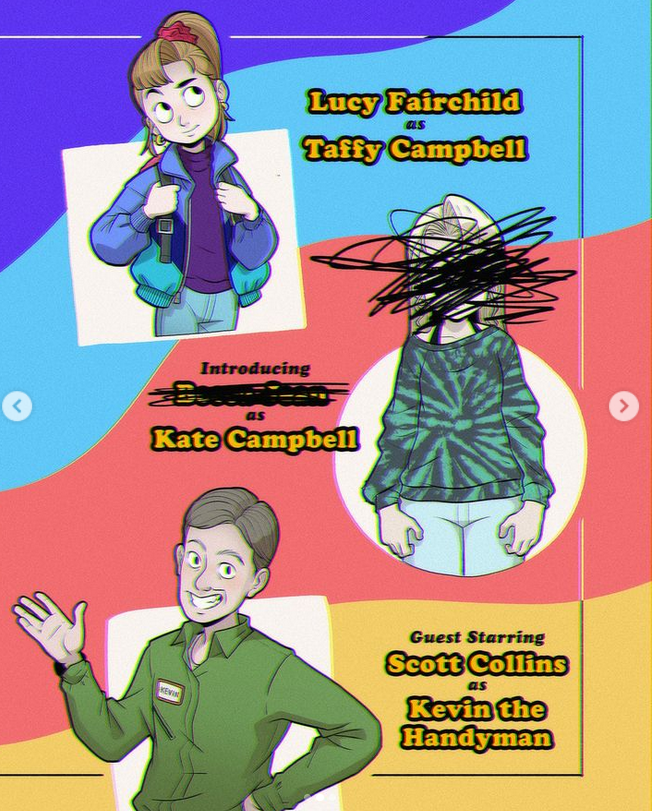
At the same time, Ellis doesn’t pull any punches when it comes to the blood and gore. One story in particular, Milk Door, is a perfect example of this. I don’t want to spoil the ending for you, but it is graphic, horrifying, and wonderful.
What (kind of) didn’t work
I only have one issue with this book. If you follow Ellis on social media, you’ve likely seen at least some of these stories before.
Though, even as I say this, I’m not sure what could have been done about it. Only the beginnings were shown on Instagram. This was a marketing tactic and an effective one. You get the setup for free, but you have to read the book for the punchline.
Bad Dreams in the Night was a really enjoyable way to spend a few hours. In the end, my only real complaint is that it could have been longer. But of course, that is one of the chief rules of entertainment. Always leave people wanting more.
(usr 5)
By the way, if you like this you might enjoy my haunted apartment novella, Quiet Apocalypse. The main character is a modern witch, and I share some real magic in this fictional story of an unexpected end of the world.


